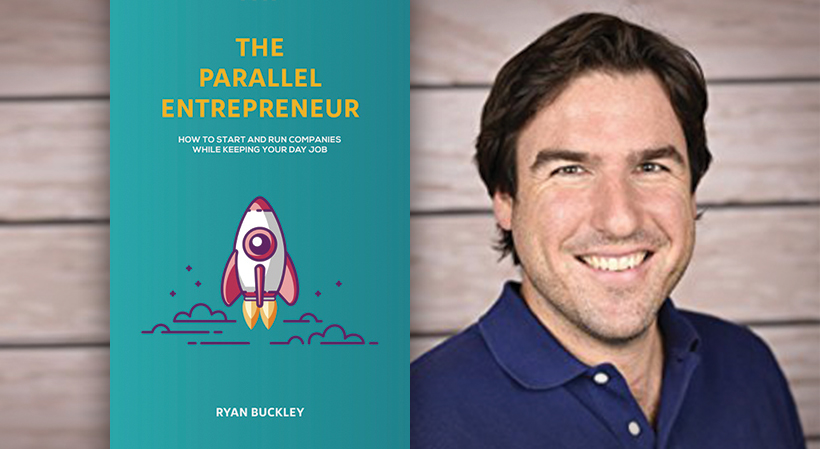I wrote my latest book, “The Parallel Entrepreneur: How to Start and Run Companies While Keeping Your Day Job,” because I have a lot of friends interested in entrepreneurship and they kept asking me the same types of questions: “How do I get started?” “How long will it take until I can quit my job?” “What type of business should I start?”
I would give them the same set of answers: “One day you’ll just start building it.” “It will probably take two years before you can quit your day job.” “Sell online software subscriptions to businesses (aka B2B SaaS).”
A good way to think about it is having 100 customers paying you $100 per month. That’s when you can live off of your business. Triple that and get to 300 customers, and you can sell your business for over $1 million.
Below is an excerpt from one of my favorite chapters of “The Parallel Entrepreneur.”
Reminder: You only need 100 customers
You don’t need to take a company or two public in order to be a successful parallel entrepreneur. You only need 100 customers paying you an average of $100 per month.
That’s it!
And by the way, those 100 customers could be all for the same business, or they could be spread across two or three businesses. Get there by any means necessary, and you’ll have reached the promised land.
Related: The Content Marketing Strategy You Need to Reach New Customers
This is the beauty of software-as-a-service (SaaS) businesses. Jonathan Siegel, founder of Xenon Ventures, loves SaaS business.
“I am bullish on SaaS because of the high customer value and low friction for building and maintaining the customer relationship,” he told me.
Jonathan believes there’s low friction because there is human factor error. Billing someone’s credit card again and again is relatively new. Before this, you needed a sales person to close and manage a high value relationship. Now you can do that with a credit card, which doesn’t feel like money to the customer.
This recurring credit card billing phenomenon leads to some great business opportunities.
A hundred customers paying $100 per month adds up to $120,000 per year of revenue. Since we’re building software, you’ll have about 85 percent gross margins, so your gross profit could be at least $100,000.
Your operating expenses are business-related assets and advertising activities, some of which will neatly cross over into your personal life (tax write-off for your home office, for example). Let’s say those expenses cost another $30,000 per year, so your “in-the-bank” net profit is $70,000.
That’s the big picture. That’s what you’re shooting for.
It’s a business that makes enough income for you to pay rent, even if you live in San Francisco or New York. If your home base is anywhere else, then you’re living like self-made royalty.
You may still need dual income to save for a house and take nice vacations, but what you’ve done with your $120,000 business is bought yourself time and flexibility. You might even keep your day job. Or you’ll start building a second $120,000 business because your first one pretty much runs itself.
This is when you feel rich, free, independent, and on top of the world. Even if you don’t have a million dollars in the bank, you’ll feel like you do, and your lifestyle won’t be that much different than the millionaire class. Except you’ll probably work a lot less, spend more time with your family, and sleep better.
That’s what it means to be a parallel entrepreneur. You don’t wait until your plate is empty before you start another business. You just spin another one up and see if it grows as nicely as your first one.
It’s “and,” not “or,” when you’re clearing $10,000 month with a SaaS business that runs itself. You can pretty much do anything you want.
Sign Up: Receive the StartupNation newsletter!
Here are a few points about how to make this work.
- Sell to businesses. Businesses don’t mind spending $100 per month on a service that delivers value. It’s likely you’ll fly right under the radar during those inevitable months when they barely log into your product. Businesses these days are conditioned to accept monthly software fees. Take advantage of it!
- Pick a problem that’s never really solved. The beautiful thing about sales leads is you never stop needing them. That’s why my company, Toofr, is a great little business. When it works (it finds good emails and generates good leads) it makes the users (sales reps and recruiters) want more. So the monthly nature of the billing actually makes sense!
- Automate as much as you can. If you’re going to actually enjoy running a small business yourself or keep your team lean enough so you’re able to keep a ratio of $100K in profit per employee, then you need to automate. A lot. Often that means signing up for other people’s software products. I love supporting other parallel entrepreneurs.
- Focus on one problem per business. If you try to do too much at one time, you’ll burn cash without increasing your company’s value. Your investors will lose steam and you won’t have the traction you need to be competitive. Instead, focus on doing one thing that adds value. Diane Baxter, a CFO at Kranz & Associates, sums it up nicely, “If you want to do parallel entrepreneurship, then have multiple singularly-focused business with different boards and different investors.”
It will take some time to get there on a bootstrapped shoestring budget, but you’ll get those 100 customers eventually. Just stick to the game plan and stay tuned in to your market.
“The Parallel Entrepreneur: How to Start and Run Companies While Keeping Your Day Job” is available now at fine booksellers and can be purchased via StartupNation.com.






